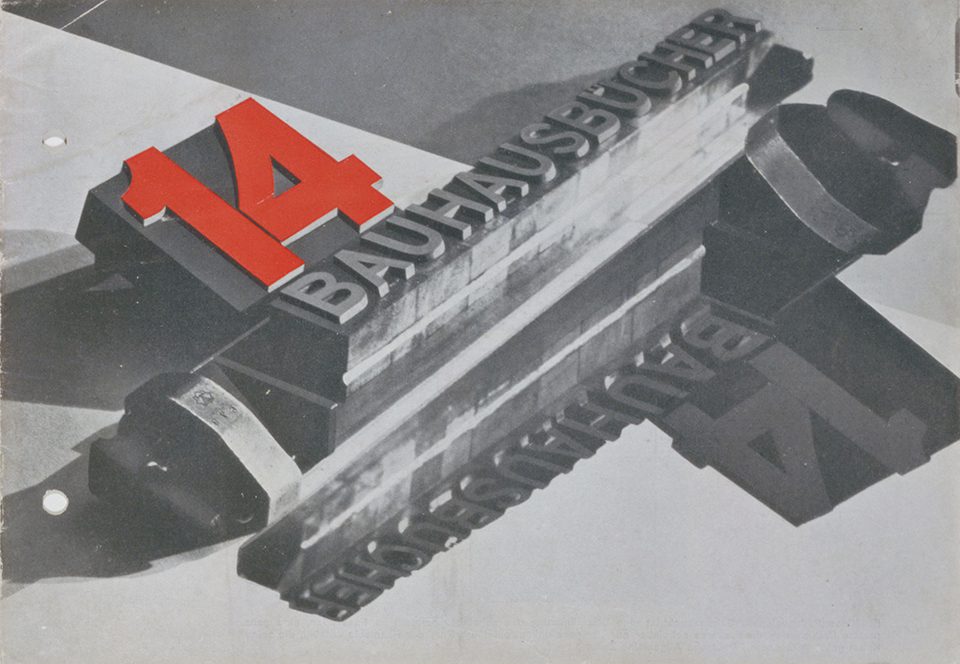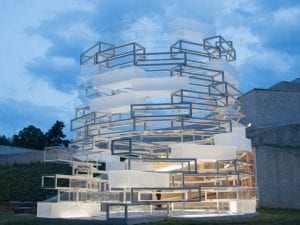Exploring the world’s most famous art and design school, Art as Life is the biggest Bauhaus exhibition in the UK in 40 years. Surveying A movement that developed after World War I, the exhibition showcases more than 400 works from across a vast range of disciplines.
Reflecting on his career in 1956, the architect Walter Gropius wrote: “In the course of my life I became more and more convinced that the usual practice of architects to relieve the dominating disjointed pattern here and there by a beautiful building is most inadequate and that we must find, instead, a new set of values, based on such constituent factors as would generate an integrated expression of thought and feeling for our time … such a unity might be attained to become the visible pattern for a true democracy.” The architect’s utopian vision was most concretely expressed during the years after World War I from 1919 to 1933, when he devised the world’s most influential art school, the Bauhaus. After the devastation of the war, Germany desperately needed to reassess its position within Europe. Gropius had fought in the war and, rather than give in to disillusion, he used the experience to fuel his desire to create a better and more equitable world. Through his idealistic fervour the Bauhaus became a byword for minimalistic modernism and intellectual aesthetics; from Apple to IKEA, the school’s stylistic predilections still resonate and shape our contemporary world.
Bauhaus: Art as Life at the Barbican in London is the largest Bauhaus exhibition in 40 years and features 400 works in a variety of disciplines such as architecture, textiles, photography, sculpture, furniture, painting, ceramics, product design, theatre, film and graphic design. Kate Bush, Head of Art Galleries, Barbican Centre, states: “The Bauhaus was an inescapable force in the development of modern visual culture, whose impact was felt around the world; it was fuelled by an idealism and a commitment to creativity and experiment that remains ever more relevant today.” These artworks will be viewed within the context of the school’s development from its Expressionist beginnings to its forced closure 14 years later. Presenting an overview of the school’s legacy, co-curator Lydia Yee believes the timing of this in-depth reconsideration is particularly pertinent: “In the internet age, we think that Open Source and this sort of collaboration is typical of the period, but this spirit and method of working together has been around for a long time.” An array of cultural products across the spectrum of art and design have been assembled including exemplar works from such Bauhaus Masters as Josef and Anni Albers, Marianne Brandt, Marcel Breuer, Walter Gropius, Johannes Itten, Wassily Kandinsky, Paul Klee, Hannes Meyer, László Moholy-Nagy, Oskar Schlemmer and Ludwig Mies van der Rohe.
Walter Gropius founded the Bauhaus as part of a merger of two existing art schools – the Grand Ducal School of Arts and Crafts and the Weimar Academy of Fine Art. The name, literally “house of construction”, stood for School of Building and reflected Gropius’ architectural background. Having already designed several modernist buildings influenced by North American architects, Gropius ensured that the ethos of the school enshrined the concept that form should always follow function. Indeed Gropius claimed that his “Bible” for forming the Bauhaus was a portfolio of Frank Lloyd Wright’s drawings published in Germany in 1910, entitled the Wasmuth Portfolio. He also believed that the totality of artistic practice should be harnessed in the pursuit of merging functionality with aesthetics. This reconciliation of the fine arts with the applied arts remained one of the defining concerns of the school throughout its existence. Gropius’ emphasis on collaborative working was as much practical as philosophical. Having no drawing skills, he relied on the craft of others to realise his own designs, for example Bayer’s Isometric rendering of Walter Gropius’ office at the Bauhaus, Weimar (1923). Yee asserts that Gropius was particularly suited to this role because “he developed both his sensitivity and skills in fostering these sorts of relationships, and he was very specific about the type of teacher he wanted at the Bauhaus; he did not hire anyone who he felt would be divisive to the community.”
The faculty of excellence Gropius assembled at the Weimar facility included Johannes Itten, Lyonel Feininger and Gerhard Marcks; Feininger’s famous Cathedral woodcut (1919) that was emblazoned on the Bauhaus manifesto will be included in the exhibition. Over the next two years Oskar Schlemmer, Paul Klee, Wassily Kandinsky and the De Stijl painter Theo van Doesburg joined them. Under Itten’s influence the school’s aesthetic was directed toward expressionism, particularly that of the Der Blaue Reiter group of which Kandinsky, whose works are well represented in the exhibition, was a founder. Itten’s approach to education can be seen in the lithographic reproduction Analysis of Old Masters (Meister Francke, Adoration of the Magi) (1921) which breaks the painting’s composition into the elemental structures of square, triangle and circle. Itten was a follower of Mazdaznan, a fire cult derived from Zoroastrianism, and its mysticism impacted upon his views on colour. Indeed, the influence of occult beliefs, particularly Theosophy, on early abstraction is underestimated in most “rational” accounts of the period. Itten’s cultish influence extended to students shaving their heads and sleeping on straw mattresses. At a time when Gropius was seeking a more practical application of the arts and required the good will of conservative local politicians, Itten’s inclinations toward the spiritual could not be accommodated and he was forced to resign. His replacement in 1923 by László Moholy-Nagy effectively marked the end of the school’s expressionistic leanings and moved it closer towards its original aims as a school of design and industrial integration. Moholy-Nagy’s oil painting Composition Q IV (1923) reveals his preference for simplified geometric forms, composed to engender balance and harmony.
This reinforcement of art’s practical application was stimulated by several confluences, particularly the increased influence of the De Stijl and Constructivist movements, as already evidenced in Kandisky’s portfolio of prints Small Worlds (1922), and the fact that Gropius needed to make the school financially viable to prove its worth to funders. Yee points out that Gropius wished also to make the school more self-sufficient “by producing objects and products that could be mass produced [and] have contracts with German manufacturers that could make its products for a mass market.” At the same time the residual influence of the Arts and Crafts movement can be seen in the Bauhaus Manifesto: “Architects, sculptors, painters – we all must return to craftsmanship! For there is no such thing as ‘art by profession’. There is no essential difference between the artist and the artisan. The artist is an exalted artisan … This is the original source of creative design.”
This attitude led to the development of an approach that eschewed academia in favour of creative methods to develop students’ individual artistic talents. Academic requirements for enrolment were dispensed with, allowing entry for students irrespective of their social background, education or gender – athough women were directed toward the feminine crafts of weaving and pottery. Yee feels female students were “ghettoised in some ways” and this may have been due to the dominant views of the time that women “were considered not physically strong enough to use machinery.” Under the direction of Gunta Stölzl, the textile workshop generated much-needed funds for the Bauhaus by creating abstract wall hangings based on in-depth study of colour theory such as Five Choirs (1928) a jacquard weave in cotton, wool, rayon and silk.
It was in Dessau that the forms and structures we most associate with the school came to the fore, in the Bauhaus building that housed the school, and with courses weighted toward industrial design and the stylistic use of Herbert Bayer’s Universal Typeface (1925) – examples of which are represented within the exhibition. The school building was designed by Gropius and contained many features that later became hallmarks of modernist architecture. These included the steel-frame construction and a glass curtain wall, and Iwao Yamawaki’s definitive photograph, Bauhaus (1930), shows the building in its pristine form. Gropius placed studios, classrooms and administrative space in a carefully choreographed set of relationships for maximum efficiency and spatial logic. It was within these walls that Marcel Breuer experimented with tubular steel to reduce a chair’s structure to its purest form – one that could be easily mass-produced. His famous Model B3 chair, also known as Wassily chair, named in homage to Wassily Kandinsky, was actually designed in his free time, independent of the school, yet it is still associated strongly with the Bauhaus.
The metalworking studio also succeeded in generating designs suitable for mass production. Lighting fixtures and tableware by the likes of Marianne Brandt, Wilhelm Wagenfeld and Christian Dell were both beautiful and functional. The Wagenfeld Lamp (1924) was and remains one of the school’s most popular designs. Brandt in particular is recognised for her careful attention to functionality and ease of use, with details such as non-drip spouts and heat resistant ebony handles in her tea services. This exhibition also presents Brandt’s Tea Service (1924) made from tombac, nickel, silver and ebony; the pot, jug and tray redolently capture the Bauhaus look of this period. Josef Albers, best known for his compositions based on squares, was artistic director of the furniture workshop where he produced his Set of Four Stacking Tables (1927), the glass tops under-painted in typical Bauhaus hues of turquoise, yellow, red and blue.
In 1928, Gropius resigned as Director and was replaced by Hannes Meyer, a more politically radical thinker whose goal was to “curtail the influence of the artist.” Meyer felt that the Bauhaus had lost its direction because many of its products were costly and therefore not “for the people.” His views were summed up in his statement: “The people’s needs instead of the need for luxury!” Describing himself as a Marxist, Meyer introduced new courses that challenged students to observe the life processes of the end user to inform their designs. Featured in the exhibition are the original plans and drawings of The Trade Union School of ADBG building by Meyer & Witter. In 1930, Meyer was dismissed due to “Communist machinations”, and was immediately replaced by Ludwig Mies Van der Rohe, who attempted to mute the socio-political aspect of the school’s activity. All was to no avail, however, as the school was closed shortly after the National Socialist Party achieved a majority in 1932. He valiantly attempted to maintain the school as a private institute, moving to an empty Berlin telephone factory during 1931. However, increased interference by the National Socialist Party led to the Bauhaus being dissolved in 1933. Examples of Mies Van der Rohe’s furniture designs, created with Lily Reich, are presented in the gallery as reproduced in a catalogue price list of 1931.
Ironically this persecution only served to extend the influence of the school by the forced relocation of the “Bauhauslers” across the globe; for example, the greatest concentration of Bauhaus-inspired architecture is in Tel Aviv, comprising 4000 buildings and known as the White City. Josef Albers taught at Black Mountain College, North Carolina for a period before moving to Yale. Gropius arrived at Harvard where he transformed the School of Architecture into one of the pre-eminent centres for Architecture in the USA. Meis van der Rohe and Moholy-Nagy had a similar result at the Illinois Institute of Technology. The new impulses they brought with them were categorised under the heading of the “International Style”.
Utopian philosophies should always be questioned on the basis that the world is more complex than most allow for. That said, it is quite incredible that a 14 year experiment in cross-disciplinary design has left such an influential legacy. Bauhaus: Art as Life gives the public an opportunity to see firsthand the objects that transformed design and consider how the school’s ethos has permeated down the years to the present. Yee draws attention to an exciting event programme tied to the exhibition that “includes a number of people who are descendents of Bauhaus artists.” Returning full circle to the curator’s statement on “Open Source collaboration”, it seems fitting that Laszlo Systems, developer of the OpenLaszlo platform, was named in honour of László Moholy-Nagy.
Bauhaus: Art as Life ran at Barbican Centre from 3 May – 12 August 2012. For tickets and further information visit www.barbican.org.uk.
Angela Darby




